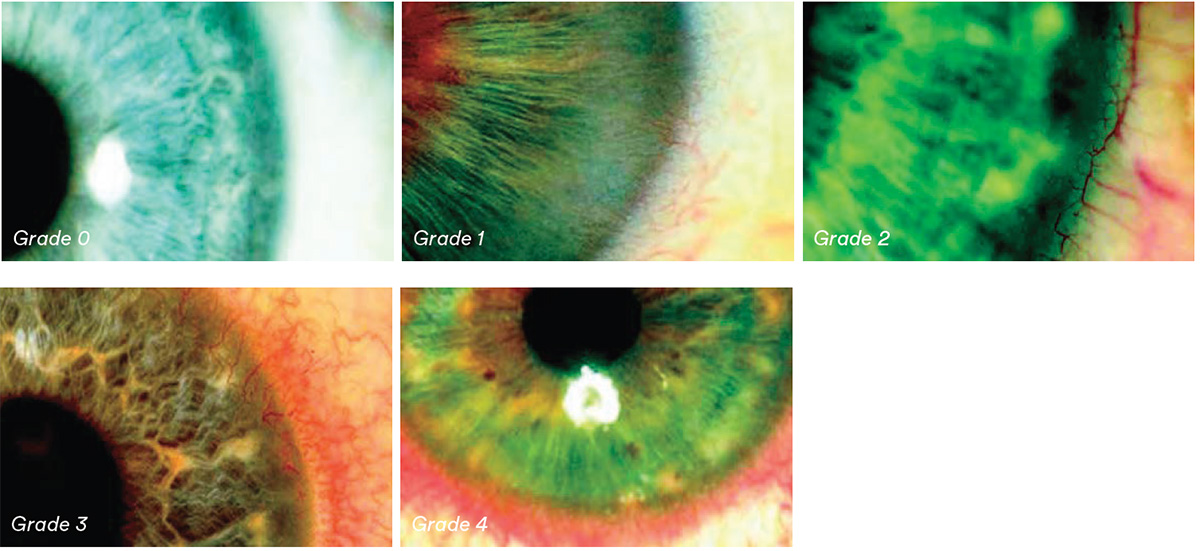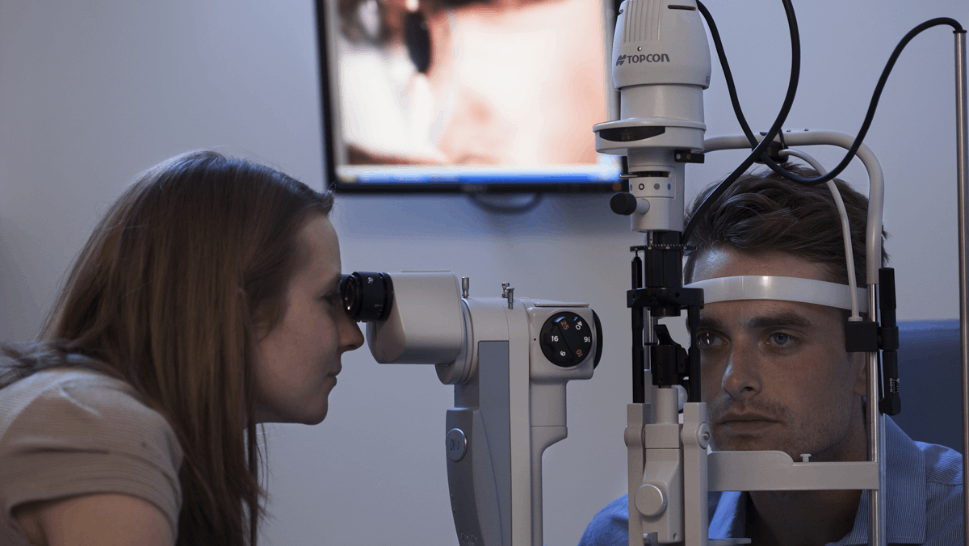What you need to know
Slit Lamp Viewing:
• Diffuse beam • Direct illumination • Medium magnification (16x)
Grading:
- Position: superior, nasal inferior, temporal
- Grade 0: None
- Grade 1: Slight injection of limbal vessels
- Grade 2: Mild injection
- Grade 3: Moderate injection
- Grade 4: Severe injection

Incidence:
- True incidence unknown although common in most lens types. Occurs to some degree with all hydrogel lenses, although may be mild with thin, mid-water hydrogels.
Aetiology:
- Short-term clinical sign of corneal hypoxia –related to oxygen performance of lens
- Inflammation (tight lens syndrome)
- Mechanical irritation (trauma, poor lens fit)
- Atopic/allergic reaction
- Solution sensitivity
- Infection
Symptoms:
- Often none; depends on cause
- Possible pain
Signs:
- Engorged limbal blood vessels with possible subsequent neovascularisation
- May be localised or full coverage, depending on lens type or aetiology, with conjunctival vessel involvement

What you need to recommend to your patients
Management:
- Manage if ≥ grade 2 or if ≥ 1 grading scale interval increase or if symptoms occur
- Cease lens wear until resolution. Refit with higher oxygen performance lens materials (Silicone Hydrogel (SiHy), higher Dk/t hydrogel, rigid corneal lenses (RCL))
- Reduce wearing time or change to Daily Disposable (DD)
- Optimise lens fit
- Remove allergen
- Change care system
Prognosis:
- Good – depends on cause
- Reversible
- Noticeable “white-eye” difference between SiHy and traditional hydrogels
Differential Diagnosis:

Neovascularisation, superior limbic keratoconjunctivitis (SLK), keratitis, CLARE or tight lens syndrome, uveitis, acute glaucoma, intra-ocular infection
Further reading
- du Toit R, et al. Recovery from hyperemia after overnight wear of low and high transmissibility hydrogel lenses. Curr Eye Res 2001; 22: 68 73
- Papas E et al. High oxygen-transmissibility soft contact lenses do not induce limbal hyperemia. Curr Eye Res 1997; 16 (9): 942-948
- Papas E. On the relationship between soft contact lens oxygen transmissibility and induced limbal hyperaemia. Exp Eye Res 1998; 67: 125 31
- Papas E. The role of hypoxia in the limbal vascular response to soft contact lens wear. Eye Contact Lens 2003; 29: S72-4; discussion S83-4, S192-4
- Pritchard N et al. Ocular and subjective responses to frequent replacement of daily wear soft contact lenses. CLAO J 1996; 22(1): 53-59
- Pult H et al. Limbal and bulbar hyperaemia in normal eyes. Ophthalmic Physiol Opt 2008; 28: 13-20
- Szczotka-Flynn LB et al Contact Lenses Manufactured in Etafilcon A Are Noninferior to Two Silicone Hydrogel Lens Types With Respect to Hypoxic Stress. Eye & Contact Lens 2018;44:190-9
Click here to review our Slit Lamp Techniques Videos


